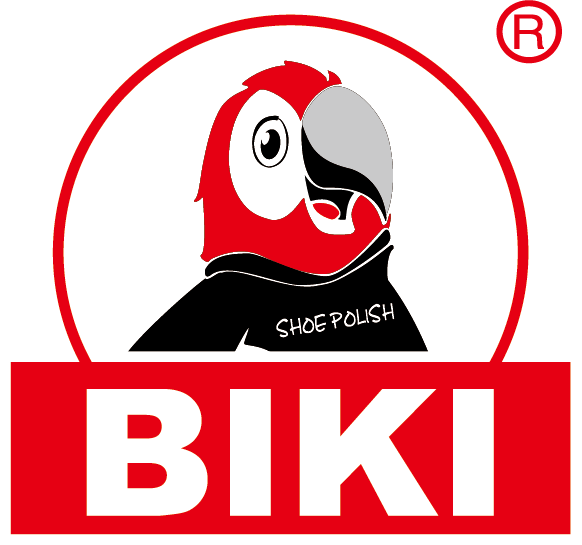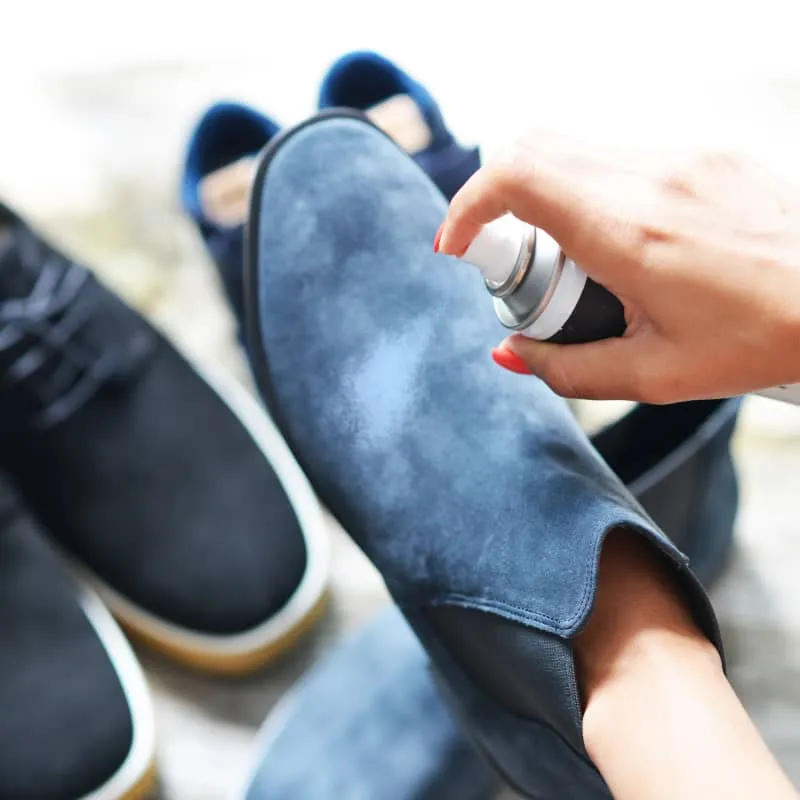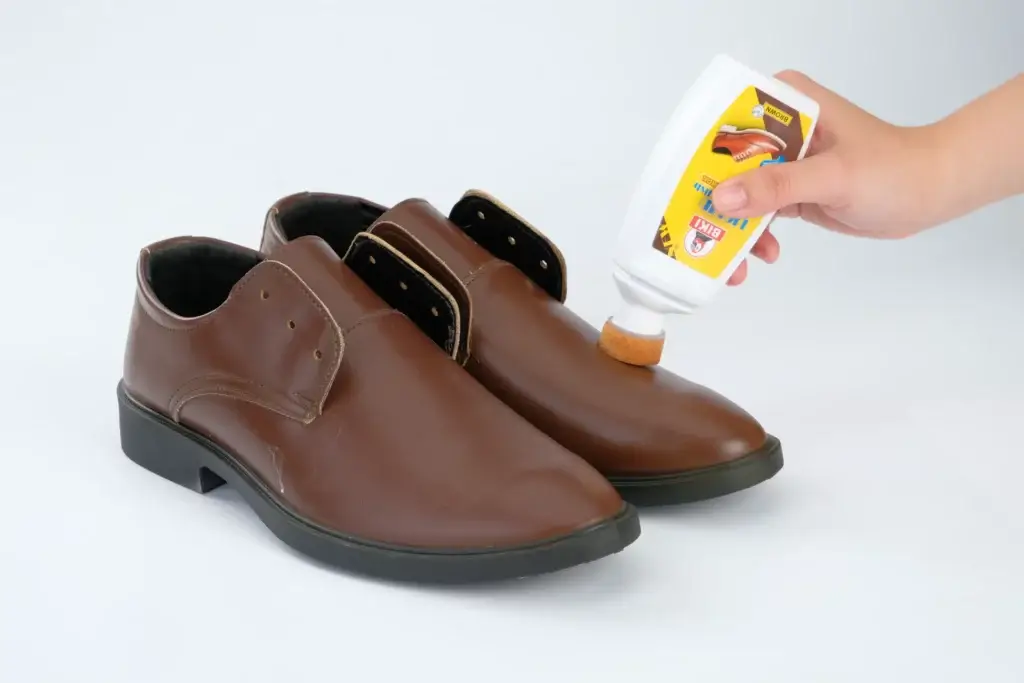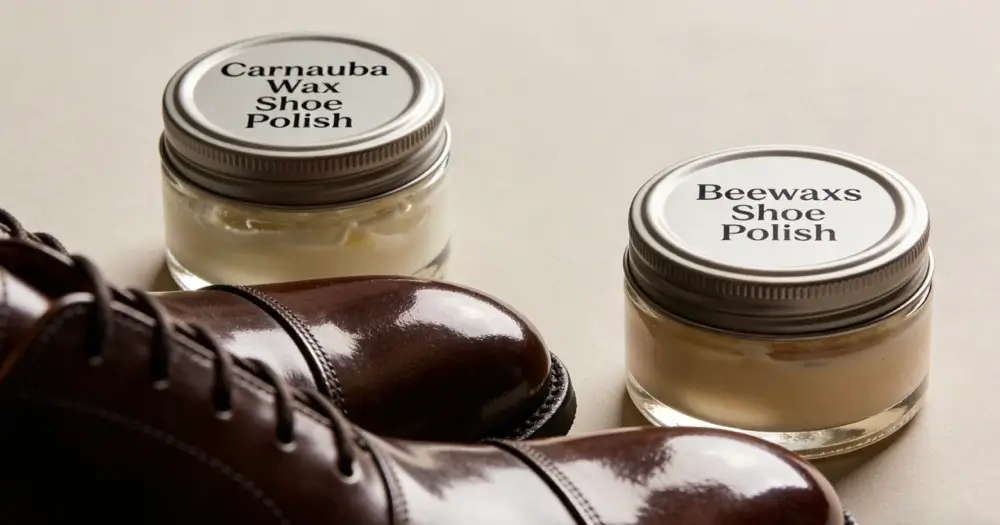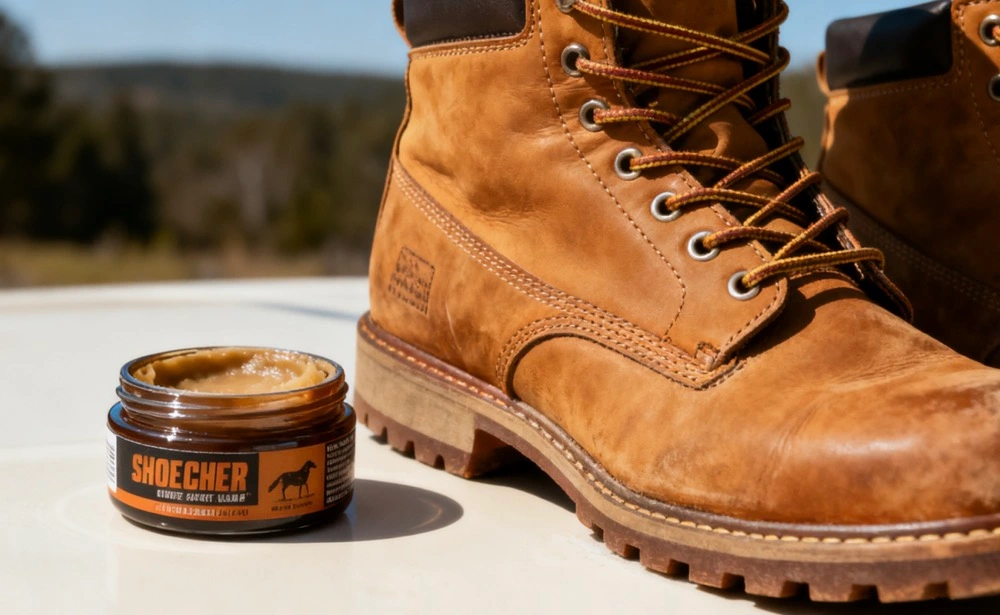Your quality leather shoes are an investment. They show your commitment to style, durability, and craftsmanship—something valuable in both money and feeling.
Like any natural material, leather is a skin. It needs proper care to last a long time and look good.
This guide covers everything you need to know about leather care. We will explore what a leather conditioner for shoes is and why you need it, look at how it’s made, and give you steps to keep your shoes looking great for years.
What Is Shoe Conditioner?
Think of leather shoe conditioner as a moisturizer for your footwear. It contains oils, fats, and waxes that help keep leather soft and flexible.
Its main job is to soak into the leather. This feeds the protein fibers inside and stops them from getting dry and brittle.
Over time, without this care, the fibers slowly dry out and lose their softness. The leather becomes stiff and may crack.
Not all conditioners work the same way. Products range from simple mineral oil mixtures to the better natural oil and wax blends we recommend.
The 5 Benefits of Conditioning Your Leather Shoes
The proof is in the patina. Just one conditioning session can make tired leather look new again.
Using a conditioner for leather shoes regularly makes a big difference. It can turn shoes that last one season into ones that last for many years.
- Prevents Cracking
This is the most important benefit. Leather bends when you walk, especially across the front. Conditioning keeps the fibers flexible so they bend without breaking. - Restores Softness & Suppleness
A good conditioner adds moisture back to the leather. It fixes stiffness from weather exposure and brings back the soft feel of new leather. - Enhances Color & Patina
Conditioner does more than add shine. It feeds the leather deeply, which makes its natural color richer and deepens the unique look that comes with wear. - Extends Lifespan
Regular care is the best way to protect your investment. Well-cared-for shoes can last for decades, much longer than neglected ones. - Adds Light Water Resistance
While not as good as a waterproofer, the waxes in many conditioners create a light barrier. This helps keep out small spills and light rain.
What is Leather Shoe Conditioner Made of?
To really understand a leather boot conditioner, we need to look at what’s in it. The mix of ingredients makes the difference between an okay product and a great one.
Nourishing Oils: The Hydration
Oils are the most important part of any conditioner. They go deep into the leather, replacing lost fats and helping the fibers move smoothly.
- Mink Oil: A strong, deep-soaking oil. It works well for tough work boots but can darken light-colored leathers.
- Neatsfoot Oil: A traditional and effective softener. Always use “pure” neatsfoot oil, as lower-quality versions can damage stitching over time.
- Lanolin: This comes from sheep’s wool. It’s an excellent natural moisturizer that’s very similar to the oils in leather itself.
Protective Waxes: The Shield
Waxes do two things. They lock in the oils to keep them from drying out and create a protective layer on the leather’s surface.
- Beeswax: A natural, flexible wax. It gives a soft shine and makes a breathable barrier against moisture and dirt.
- Carnauba Wax: From a Brazilian palm tree, this is one of the hardest natural waxes. It’s often used in conditioner-polish combinations to add shine and scratch protection.
Solvents: The Delivery System
Solvents carry the other ingredients. They gently clean the leather’s pores and help the oils and waxes soak in deeply.
There’s an important difference here. Harsh, petroleum-based solvents can remove leather’s natural oils with repeated use, causing damage over time. We prefer natural, pine-based turpentine, which cleans mildly and carries the good ingredients without harming the leather. As experts note, a good conditioner replaces dried-out oils and softens the fabric, and the right solvent helps do this.
How to Condition Shoes & Boots in The Right Way
Following the right steps in the right order is key to getting professional results and protecting your footwear.
- Preparation & Cleaning
First, take out the laces so you can reach all parts of the shoe. Use a horsehair brush to remove all dirt, dust, and debris. For very dirty shoes, use a leather cleaner and let them dry completely. This first step is essential. - Application
Put a small, pea-sized amount of conditioner for shoes on a clean, soft cloth. A microfiber cloth works well. Remember: it’s better to apply two thin, even coats than one thick one. - Massage It In
Using small circles, gently work the conditioner into the leather. Cover the whole surface, paying special attention to areas that bend a lot, like the front and back, and any spots that look dry. - Let It Penetrate
Let the shoes sit and soak up the conditioner. This can take from 30 minutes to several hours, depending on the product and how dry the leather is. This waiting time lets the oils go deep into the fibers. - Buff to a Finish
Take a clean horsehair brush and buff the entire shoe with quick, sweeping motions. This removes any extra conditioner from the surface and creates a soft, natural shine.
Conditioner vs. Polish vs. Cleaner: What’s the Difference?
Using the right product at the right time is important. Let’s clear up the differences between these three main shoe care products.
| Feature | Leather Cleaner | Leather Conditioner | Shoe Polish (Cream/Wax) |
| Primary Function | Removes dirt, grime, & old polish | Nourishes & moisturizes leather fibers | Fills scuffs, adds color, creates a high-gloss shine |
| Analogy | Face Wash | Moisturizer | Makeup / Foundation |
| Key Ingredients | Surfactants, light solvents | Natural oils, fats, lanolin | Pigments, hard waxes (carnauba), solvents |
| When to Use | Before conditioning/polishing | Every 1-6 months (depending on wear) | After conditioning, for events or to restore color |
| Result | A clean, matte surface | A soft, supple, hydrated leather | A colored, shiny, and protected surface |
Conditioner for Different Leather Types
The type of leather determines the type of care needed. Using a heavy, waxy conditioner on delicate calfskin is a bad idea. Here’s our guide to choosing the right product.
For Smooth Dress Shoes
Calfskin and other fine leathers need a light, penetrating cream or balm. Look for lotion-like conditioners with quality oils that won’t darken the leather too much or clog its fine pores.
For Rugged Boots
Oiled, waxy, and pull-up leathers used in work and outdoor boots need a stronger shoe conditioner. These often contain more waxes and tough oils, like mink or neatsfoot, to handle harsh conditions.
For Specialty Leathers
Some leathers need special care. Horween’s Chromexcel already has lots of oils in it, so it needs less frequent but very specific conditioning. Shell Cordovan isn’t a hide but a membrane and needs products made just for it to prevent damage and keep its unique, glass-like shine. The community consensus on high-quality shoe care always emphasizes matching the product to the specific leather.
For shoe brands, creating your own conditioner for leather shoes designed for your specific leather collection is a great way to add value and help customers. We specialize in creating these custom formulations.
Frequently Asked Questions
How often should I condition my shoes?
It depends on how much you wear them and your climate. For shoes worn 1-2 times a week in normal weather, conditioning every 3-6 months is enough. For boots worn daily in harsh, wet, or dry conditions, conditioning every 1-2 months may be needed. Watch your leather; if it looks dry or feels stiff, it’s time.
Can I use too much conditioner?
Yes. Too much conditioner can oversaturate the leather, blocking its pores and stopping it from breathing. This can make the surface sticky or greasy and might weaken the leather. Always apply thin, even coats and let the product fully soak in.
Can I use shoe conditioner on a leather jacket or bag?
Usually yes, but be careful. A good quality leather conditioner for shoes often works for other smooth leather items. Always test it on a small, hidden area first. Some conditioners, especially those for tough boots, may be too heavy or could darken the leather of a delicate bag.
What is the shelf life of a leather conditioner?
Most good leather conditioners, when stored in a cool, dry place away from sunlight, last for several years. Natural formulas may show some separation of oils over time; this is normal and can be fixed by stirring. If it smells bad or the texture changes a lot, throw it out.
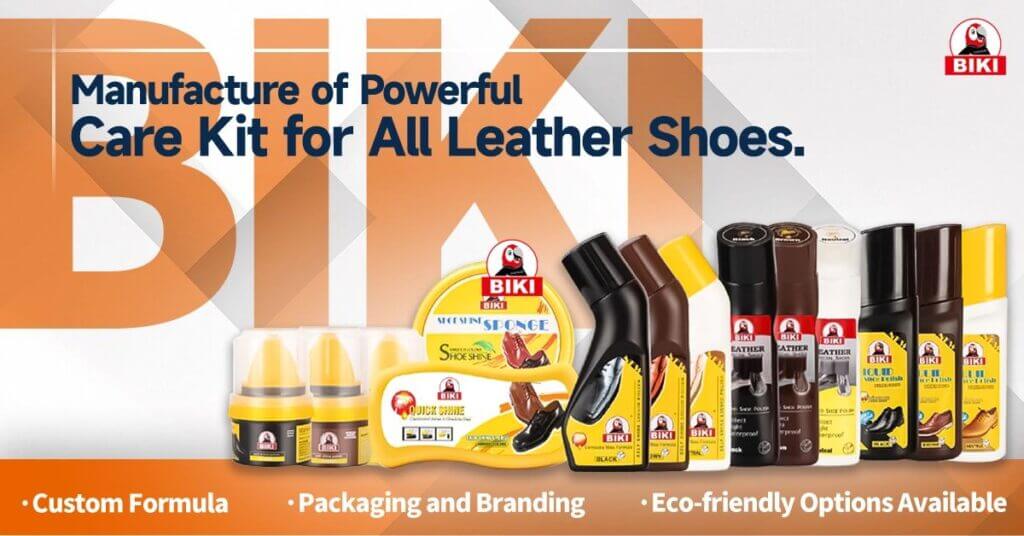
Looking for high-quality shoe conditioners for your brand? Biki Shoe Care offers comprehensive private label and wholesale services. Contact our representatives today!
